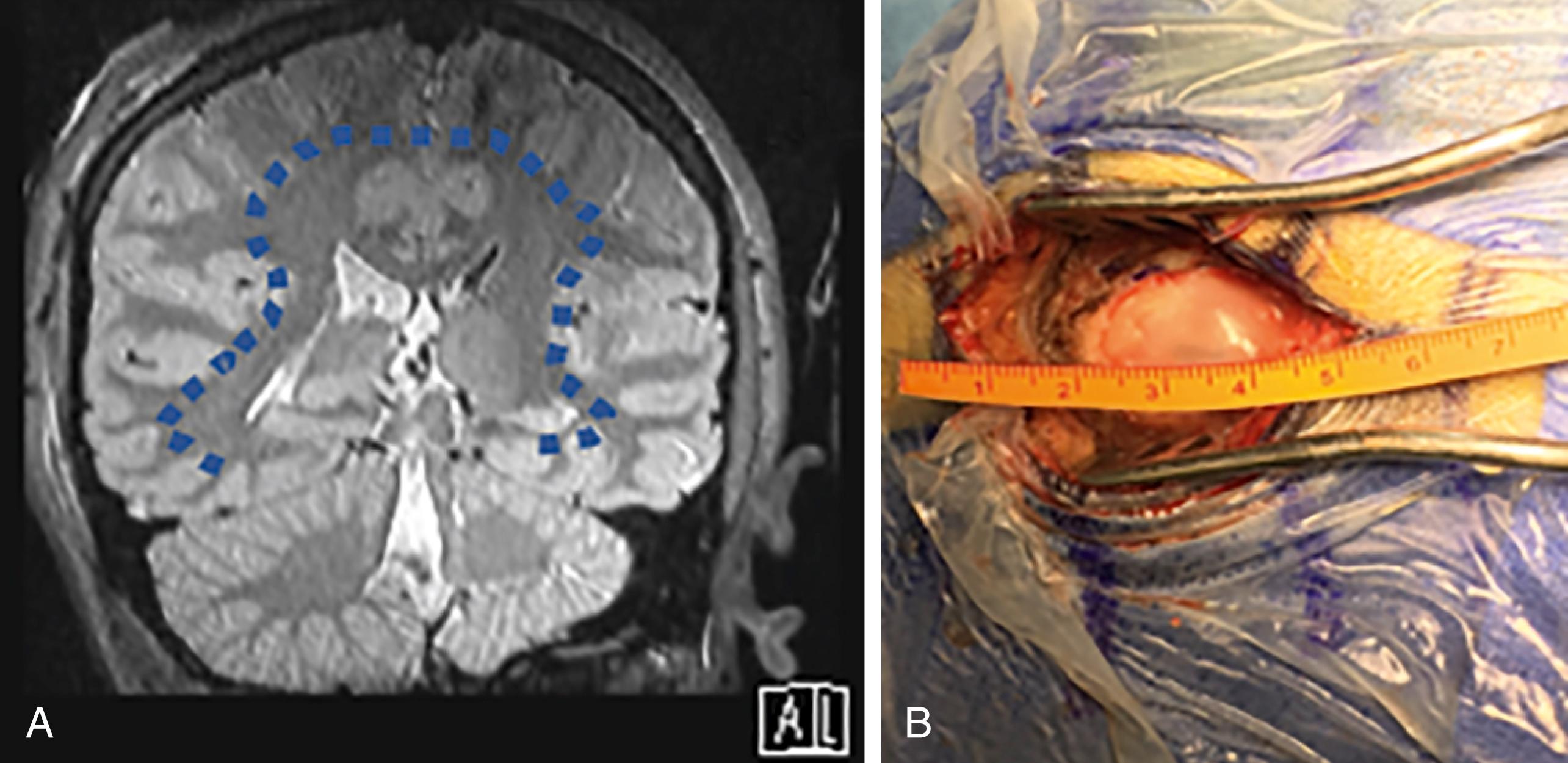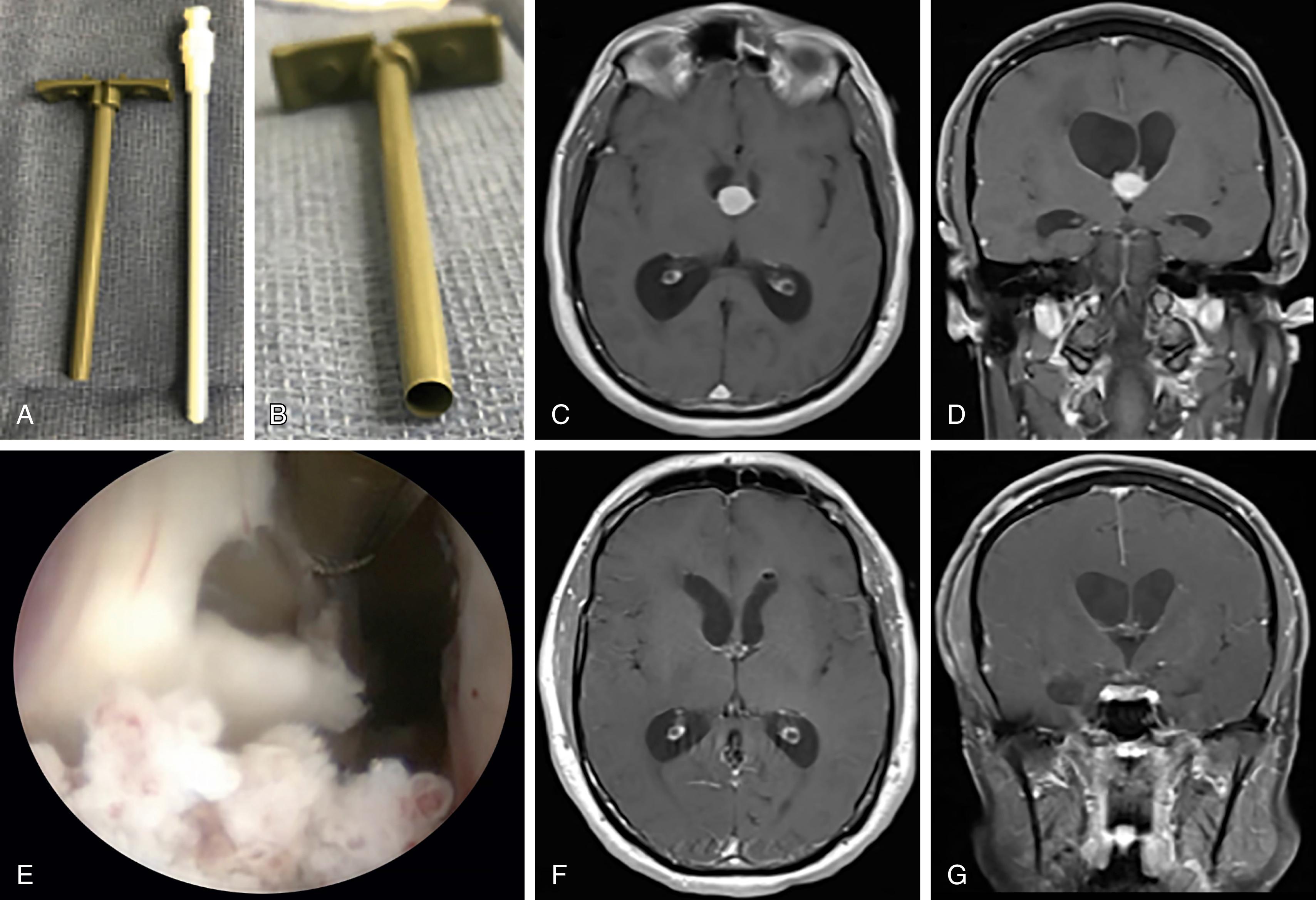Physical Address
304 North Cardinal St.
Dorchester Center, MA 02124
Deep-seated brain lesions include a variety of pathologies, including benign and malignant brain tumors, vascular malformations, and intracranial hemorrhages (ICHs), among others. A deep-seated location is a nebulous term, but generally refers to any location below the deepest sulcal boundary ( Fig. 18.1A ). This therefore includes a variety of anatomical locations, including the centrum semiovale, basal ganglia, thalamus, and deep cerebellar nuclei, as well as white matter tracts (WMTs) of the corticospinal tract (CST), superior longitudinal fasciculus, arcuate fasciculus (AF), inferior frontal-occipital fasciculus (IFOF), inferior longitudinal fasciculus (ILF), cingulum, and corpus callosum (CC), among others. Access to lesions in these locations have historically been associated with significant morbidity because the conventional approach is to perform large craniotomies, wide cortisectomies, extensive white-matter dissection, and prolonged retraction. , Each of these surgical elements can be associated with significant parenchymal injury, ischemia, and eventual encephalomalacia. ,

The concept of minimally invasive surgery is to minimize any potential trauma to surrounding tissues without compromising the efficacy of lesion resection. For deep-seated pathologies, the surrounding tissues include the superficial cortex, surrounding WMTs, and deep nuclei. Channel-based or tubular retractors provide a potentially minimally invasive, protected corridor to access and resect these deep-seated lesions. These retractors come in a variety of shapes, widths, and lengths, and can be applied within the sulcus or gyrus. They each have their own set of advantages and disadvantages, and therefore indications ( Table 18.1 ). In this chapter, we will discuss the various types of available tubular retractors, their advantages and disadvantages, their indications, and complication avoidance when using these minimally invasive approaches.
| Peel-Away Catheter | Oval-Shaped Retractor | Circular Retractor | |
|---|---|---|---|
| Least invasive | X | ||
| Bimanual surgery | X | X | |
| Endoscope only | X | ||
| Exoscope visualization | X | X | |
| Microscope visualization | X | X | |
| Transgyral access | X | X | X |
| Trans-sulcal access | X | X | |
| White matter tract sparing | X | X | |
| Applied within eloquent cortex | X | ||
| Best maneuverability | X | ||
| Used with retractor arms | X | X |
The conventional way to approach deep-seated lesions is to perform large craniotomies, wide cortisectomies, extensive white-matter dissection, and prolonged retraction. , These elements are all necessary because one-, two-, three-, or even four-bladed retractors are needed to maintain the corridor for these deep-seated lesions. , There must be enough space for these retractors to be applied to the cortex and underlying white matter. , This creates several potential problems that can lead to significant neurologic morbidity. , The large craniotomies require large incisions and therefore can be associated with longer surgical times, bleeding, and wound healing problems, as well as potentially subjecting uninvolved cortex and WMTs to iatrogenic injury. , Wide cortisectomies can damage underlying cortex and therefore can only be used in noneloquent cortical regions. , Extensive WMT dissection can lead to subcortical injury. , Prolonged retraction can sever WMTs, result in tissue ischemia and venous stasis, and eventually lead to encephalomalacia. , These problematic surgical aspects all occur before the lesion is actually resected. ,
Tubular or channel-based retractors allow minimally invasive access to deep-seated lesions and have several distinct advantages as compared to conventional retractor systems. First, they provide more equivalent, circumferential retraction of the cortex and white matter. Bladed retractors apply inequivalent vector forces on the brain parenchyma which can shear the WMTs. , Second, the small footprint of the tubular retractor means it requires less extensive openings. Bladed retractors are typically wider, are often used in multiples, and incorporate several retractor arms that collectively necessitate larger openings. , Third, the channeled retractor provides a protected corridor for repeated entry and resection. The bladed retractors, even when using several blades, leave several exposed areas between the blades vulnerable to injury with repeated access into the surgical cavity. , Lastly, the tubular retractors with the sharp obturator tips are designed to displace rather than sever the WMTs, especially the smaller-caliber circular retractors. The conventional retractor systems apply an unknown and inconsistent force to the WMTs that is dictated by the “pull” applied by the operator, which subjects the WMTs to tension and therefore injury. , Despite these advantages, these tubular retractors have several distinct drawbacks. The corridor created by these retractors is narrow, which can make it difficult to provide illumination to visualize the tumor and its vascular supply. This narrow aperture also decreases the surgeon’s range of flexibility to maneuver around the lesion, and also obviates the use of certain instruments, including an ultrasonic aspirator and typical bipolar cautery.
In order to overcome some of these limitations, various devices to facilitate channel-based surgeries have been developed. The use of endoscopes and exoscopes are examples. An endoscope is a camera that is inserted into the body cavity and provides direct, close-proximity visualization and illumination, and comes with angled lenses to provide more line-of-sight views as compared to the conventional surgical microscope. For deep-seated lesions, endoscopes are typically introduced through peel-away tubular retractors ( Fig. 18.2 ). They are primarily limited to air- or water-filled cavities that have clear resolution, make it difficult to perform bimanual surgery, and are typically limited to linear trajectories. Exoscopes are similar to endoscopes but hover above the surgical site, similar to an operative microscope. However, as compared to the operative microscope, exoscopes have a greater degree of magnification, come in two- and three-dimensional imaging capabilities and wider focal ranges. They are more ergonomic, as surgery is done by looking at a screen as opposed to through lenses. In addition to optics, specialized instruments can help with surgical resection in the small working channel, including surgical navigation, a side-cutting aspiration device (Myriad, Nico, Indianapolis, IN) for lesion removal, extended-tip bipolar cautery for hemostasis, and working channel ultrasound (Aloka, Hitachi, Twinsburg, OH) for lesion localization and assessment of resection, among others.

Become a Clinical Tree membership for Full access and enjoy Unlimited articles
If you are a member. Log in here